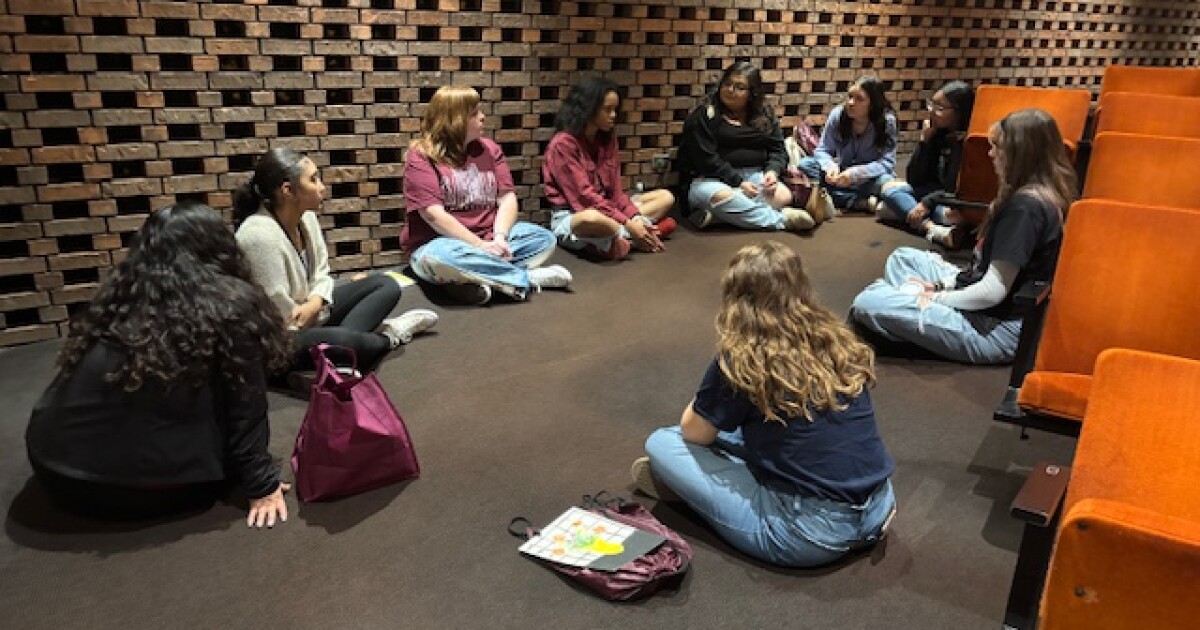Citi Foundation’s 2025 Global Innovation Challenge: Advancing Sustainable Development Goals through Youth Employment Initiatives
Introduction: A Strategic Investment in Decent Work and Economic Growth (SDG 8)
The Citi Foundation has announced its 2025 Global Innovation Challenge, allocating $25 million in grant support to 50 community organizations worldwide. Each organization will receive $500,000 to develop and implement innovative employment solutions for low-income youth. This initiative directly supports the United Nations Sustainable Development Goals, primarily SDG 8 (Decent Work and Economic Growth), by promoting full and productive employment. It also targets SDG 10 (Reduced Inequalities) by focusing on economically disadvantaged young people and fostering their integration into the global economy.
The Global Youth Employment Challenge: A Barrier to Sustainable Development
The program addresses the critical issue of global youth unemployment, which hinders progress towards several SDGs. The International Labour Organization estimates that 65 million young people are unemployed, a situation that exacerbates poverty and impedes economic growth, directly impacting SDG 1 (No Poverty). Key barriers to youth employment identified include:
- Skills Mismatch: A significant obstacle reported by 63% of employers.
- Rapid Obsolescence of Skills: An estimated 39% of current skill sets are projected to become outdated within five years.
- Digital Transformation: The acceleration of digitalization and AI is reshaping job markets, creating high demand for new competencies. Projections indicate 60% of employers expect digital access to transform their businesses by 2030.
Programmatic Focus: Fostering Quality Education and Future-Ready Skills (SDG 4)
The grant support is designed to equip young people with relevant skills for a changing economy, aligning with SDG 4 (Quality Education), specifically Target 4.4, which aims to increase the number of youth with technical and vocational skills for employment. The funded programs will focus on several key areas:
- Upskilling for digital literacy, including Artificial Intelligence (AI).
- Technical and vocational training.
- Work-based learning and internships.
- Career guidance and mentorship.
- Resources for young entrepreneurs.
Global Grantee Initiatives: Localized Impact on SDGs
The selected community organizations will implement diverse programs tailored to local needs, contributing to multiple SDGs. Notable examples include:
- Education For Employment (Middle East & North Africa): Advances SDG 8 by providing AI-enabled job matching and upskilling for youth to navigate the digital economy.
- Generation (Mexico & Colombia): Contributes to SDG 1 and SDG 8 by training low-income youth in computer programming and IT to secure living-wage jobs in the technology sector.
- Girl Effect (Kenya): Focuses on SDG 5 (Gender Equality) and SDG 8 by advancing job opportunities for young women through certifications, vocational training, and mentorship in creative and digital industries.
- Hayal Ortaklari Denergi (Türkiye): Supports SDG 4 and SDG 9 (Industry, Innovation and Infrastructure) by equipping youth with skills in AI, big data, and fintech for competitive jobs.
- Instituto Oportunidade Social (Brazil): Promotes SDG 10 by expanding employability for low-income youth through free training in ICT, financial literacy, and AI.
- NPower (USA): Addresses SDG 8 by equipping young adults from low-income communities with AI training and professional development to access high-quality tech careers and achieve economic mobility.
- Year Up United (USA): Aligns with SDG 4 and SDG 8 by providing workforce readiness training and specialized skills development for careers in high-demand fields such as IT, banking, and software development.
Implementation Framework and Partnership for the Goals (SDG 17)
The grants will fund programs over a two-year period. A key component of the initiative is the establishment of a learning community for all 50 grantees. This framework facilitates collaboration, the sharing of best practices, and the exchange of lessons learned, embodying the principles of SDG 17 (Partnerships for the Goals). By fostering a network of community organizations, the Citi Foundation aims to catalyze further investment and drive long-term, sustainable progress in addressing youth unemployment globally.
Analysis of SDGs, Targets, and Indicators
1. Which SDGs are addressed or connected to the issues highlighted in the article?
-
SDG 1: No Poverty
The article directly connects youth unemployment to poverty, stating it “increases poverty.” The initiative’s focus on providing “low-income youth” with employment solutions, “living-wage jobs,” and “economic mobility” is a direct strategy to alleviate poverty.
-
SDG 4: Quality Education
The core of the initiative is education and skills development. The article emphasizes programs for “upskilling for digital literacy (including AI), technical and vocational training, work-based learning,” and “financial literacy,” all of which are central to providing quality and relevant education for employment.
-
SDG 5: Gender Equality
The article highlights the work of “Girl Effect,” an organization that is “advancing job opportunities for unemployed youth in Kenya, with a focus on girls and young women.” This specific focus on empowering young women through skills training in digital industries directly addresses gender equality.
-
SDG 8: Decent Work and Economic Growth
This is the most prominent SDG in the article. The entire initiative is designed to combat “youth unemployment,” which is described as a “critical challenge to global economic progress.” The goal is to provide youth with “meaningful opportunities,” “access to job opportunities,” and skills for a “changing job market,” thereby promoting both decent work and economic growth.
-
SDG 10: Reduced Inequalities
The program specifically targets “low-income youth,” a demographic group that often faces significant disadvantages and barriers to employment. By providing them with skills, training, and job placement support, the initiative aims to reduce the economic inequality between these young people and their more advantaged peers.
-
SDG 17: Partnerships for the Goals
The article describes a large-scale partnership between the Citi Foundation, a private philanthropic entity, and 50 different “community organizations around the world.” This collaboration to pool resources and expertise to tackle a global issue like youth unemployment is a clear example of a partnership for sustainable development.
2. What specific targets under those SDGs can be identified based on the article’s content?
-
SDG 1: No Poverty
- Target 1.2: By 2030, reduce at least by half the proportion of men, women and children of all ages living in poverty. The initiative targets “low-income youth” with the goal of providing them with “living-wage jobs” and “economic mobility,” which directly contributes to reducing poverty within this demographic.
-
SDG 4: Quality Education
- Target 4.4: By 2030, substantially increase the number of youth and adults who have relevant skills, including technical and vocational skills, for employment, decent jobs and entrepreneurship. The article is centered on this target, detailing how the grants support “upskilling for digital literacy (including AI), technical and vocational training,” and training in “computer programming and information technology” to close the “job-skills mismatch.”
-
SDG 5: Gender Equality
- Target 5.b: Enhance the use of enabling technology, in particular information and communications technology, to promote the empowerment of women. The “Girl Effect” program in Kenya, which provides “certifications and vocational training” in “creative and digital industries” with a focus on girls and young women, directly aligns with this target.
-
SDG 8: Decent Work and Economic Growth
- Target 8.5: By 2030, achieve full and productive employment and decent work for all women and men, including for young people. The program’s primary objective is to create “employment solutions for low-income youth” and help them “gain access to living-wage jobs.”
- Target 8.6: By 2020, substantially reduce the proportion of youth not in employment, education or training (NEET). Although the target year has passed, the goal remains critical. The article cites the “65 million young people globally are unemployed” as the core problem the initiative seeks to address by moving them into employment.
-
SDG 10: Reduced Inequalities
- Target 10.2: By 2030, empower and promote the social, economic and political inclusion of all, irrespective of age, sex, disability, race, ethnicity, origin, religion or economic or other status. The initiative’s explicit focus on “low-income youth” is a direct effort to promote the economic inclusion of a disadvantaged group.
-
SDG 17: Partnerships for the Goals
- Target 17.17: Encourage and promote effective public, public-private and civil society partnerships. The model described in the article, where the Citi Foundation (private sector) funds 50 community organizations (civil society) to achieve a common goal, is a perfect illustration of this target in action.
3. Are there any indicators mentioned or implied in the article that can be used to measure progress towards the identified targets?
-
For SDG 8 (Target 8.6)
Indicator 8.6.1: Proportion of youth (aged 15-24 years) not in employment, education or training (NEET). The article provides a baseline figure by stating that “65 million young people globally are unemployed.” The success of the funded programs can be measured by the reduction in the number of participants who are in the NEET category after completing the training and job placement programs.
-
For SDG 4 (Target 4.4)
Indicator 4.4.1: Proportion of youth and adults with information and communications technology (ICT) skills. The article heavily implies this indicator by focusing on the need to address the “skills mismatch” through training in “digital literacy (including AI),” “information and communication technology,” “computer programming,” and “financial technology.” Progress can be measured by the number of young people who successfully acquire these specific skills through the programs.
-
For SDG 1 (Target 1.2)
Implied Indicator: Change in income level and employment status of participants. The article mentions the goal of providing “living-wage jobs” and “economic mobility” for “low-income youth.” An implied indicator of success would be tracking the employment rates and income levels of the program beneficiaries to measure their movement out of the low-income bracket.
-
For SDG 5 (Target 5.b)
Implied Indicator: Number of young women and girls securing employment in the digital economy. For the “Girl Effect” program, a key measure of success would be the number of female participants who complete the training and secure jobs in the “creative and digital industries,” thereby demonstrating economic empowerment through technology.
4. Table of SDGs, Targets, and Indicators
| SDGs | Targets | Indicators (Mentioned or Implied) |
|---|---|---|
| SDG 1: No Poverty | 1.2: Reduce at least by half the proportion of people living in poverty. | Implied: Increase in employment rates and income levels for participating “low-income youth” to secure “living-wage jobs.” |
| SDG 4: Quality Education | 4.4: Substantially increase the number of youth and adults who have relevant skills, including technical and vocational skills, for employment. | Implied (related to 4.4.1): The number of youth who acquire relevant skills in “digital literacy,” “AI,” “information and communication technology,” and “computer programming.” |
| SDG 5: Gender Equality | 5.b: Enhance the use of enabling technology, in particular ICT, to promote the empowerment of women. | Implied: The number of girls and young women who complete training and secure jobs in the “creative and digital industries” (specifically through the Girl Effect program). |
| SDG 8: Decent Work and Economic Growth | 8.5: Achieve full and productive employment and decent work for all, including for young people. | Implied: The number of youth who gain access to “high-quality tech careers” and “living-wage jobs.” |
| 8.6: Substantially reduce the proportion of youth not in employment, education or training (NEET). | Mentioned (related to 8.6.1): The article cites the problem of “65 million young people globally are unemployed,” implying that a reduction in this number among participants is a key metric. | |
| SDG 10: Reduced Inequalities | 10.2: Empower and promote the social, economic, and political inclusion of all. | Implied: Increased “economic mobility” and job market inclusion for the targeted “low-income youth.” |
| SDG 17: Partnerships for the Goals | 17.17: Encourage and promote effective public, public-private and civil society partnerships. | Implied: The existence and scale of the partnership itself—a private foundation granting $25 million to 50 civil society organizations globally. |
Source: citigroup.com






